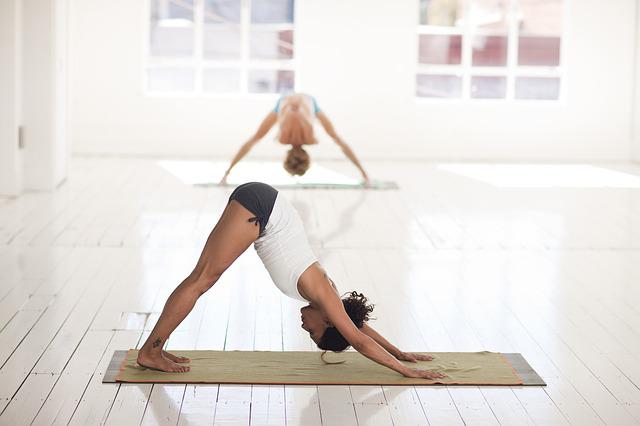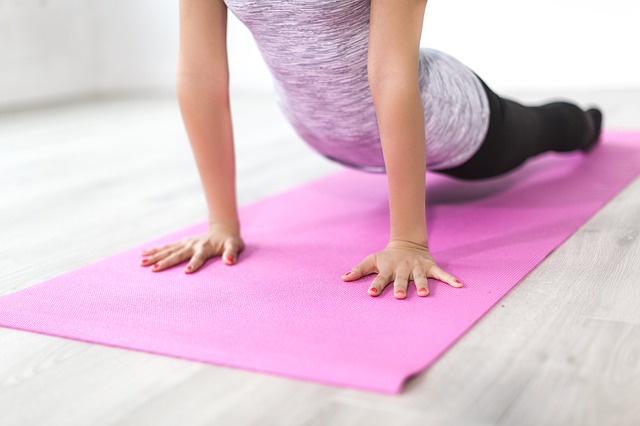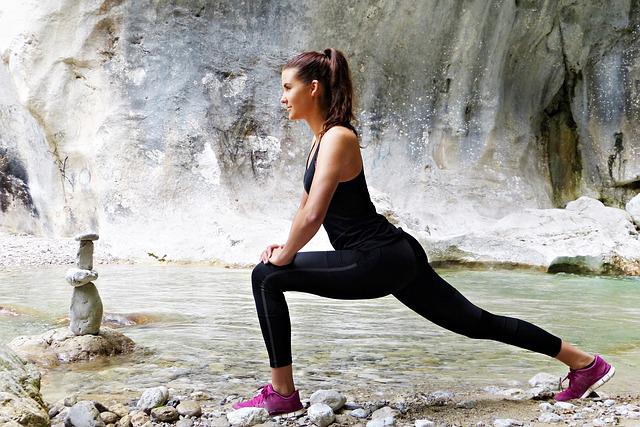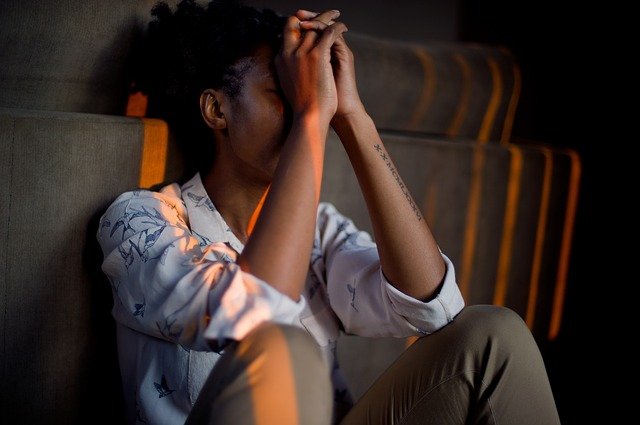You’ve probably heard that yoga is helpful for your health by now. Perhaps you’ve even tried it and realized that it helps you feel better. The continuous practice provides numerous mental and physical health benefits. Some are obvious, such as increased flexibility.
Other benefits like mental clarity and stress reduction are helpful to your health. When these yoga advantages are combined, they contribute to heightened well-being, which helps to explain why yoga is addictive to some of us.
Here are some advantages of doing yoga
- Increases flexibility
- Strengthens the body and improves balance
- Promotes joint health
- Back pain relief and prevention
- Improves breathing techniques
- Promotes mental tranquility
- Reduces stress and boosts self-esteem
- Improves heart health, sleep, and flexibility
As you become older, your flexibility tends to decline, especially if you spend a lot of time sitting around, resulting in pain and stiffness. Yoga can aid these conditions. A 2015 study in China discovered that 12 weeks of Hatha yoga enhanced flexibility in adults. The activity also improved cardiorespiratory, muscular, and physical endurance.
Here are some yoga movements and their advantages.


Poses To Improve Flexibility
- Reclined Big Toe Pose (Supta Padangusthasana) improves hamstrings and calf muscles which can be modified by employing a yoga strap to gradually develop flexibility.
- Eye of the Needle Pose (also known as Reclined Pigeon Pose) improves hip flexibility and range of motion while gently stretching the iliotibial (IT) band and piriformis.
- Eagle Pose is a balancing pose that works the legs, glutes, and adductors, as well as the shoulders.
Poses to Increases Strength
Increased muscle tone is a natural result of strength training. Yoga promotes the development of long, slender body muscles.
- Downward-Facing Dog (Adho Mukha Svanasana) strengthens and extends the hamstrings, calves, and ankles while strengthening the shoulders, palms, and wrists.
- Tree Pose (Vrksasana) challenges your balance while strengthening and stretching your legs and core. Standing foot muscles and ligaments are also strengthened.
- Chair Pose (Utkatasana) helps to strengthen the lower body and abdominal muscles while stretching the upper back.
- Plank Pose is a common fitness exercise that focuses on the upper body and core. And it strengthens the hands, wrists, and muscles in the rear body (posterior chain).
Poses to Improves Balance
Balance exercise is beneficial at any age. A lot of athletes find it to be more powerful, and people who are active find it to be beneficial to their workouts. Balance workout improves posture and functionality by allowing you to move more efficiently throughout the day.
Yoga improves agility and prevents tripping or falling. One of the awesome benefits of yoga is improvement in balance. Yoga poses increase core strength which leads you to have better postures.
- Chair Pose (Utkatasana) Practice Pose: Core engagement is essential for stability in this pose as you reach your seat back and your arms forward above.
- Half-Moon Pose (Ardha Chandrasana) strengthens your core while testing your balance. This practice also stretches the hamstrings and strengthens the ankles and thighs.
Poses to Promotes Joint Health
Yoga moves are low-impact, which means it doesn’t damage your joints. Yoga also promotes the muscles that surround the joints to be stronger and reduce their strain. With regular mild yoga practice, people with arthritis notice an improvement in their pain and mobility from attending yoga classes.
- Bridge Pose (Setu Bandha Sarvangasana) stretches the spine and improves hip stability.
- Tadasana (Mountain Pose) strengthens the ankles and knees while improving posture.
- Balasana (Child’s Pose) helps increase the range of motion in the knees and ankles and mobilizes the spine.
- Crescent Lunge (Anjaneyasana) mobilizes and stabilizes the spine, hips, and knee joints.

Poses to help with Back Ache
Increased flexibility and strength can aid in the prevention of some causes of back pain. Many people who suffer from back pain spend a significant amount of time sitting in chairs, at a computer, or driving, which promotes tension throughout the body and spinal compression. Yoga helps to alleviate frequent symptoms of back discomfort. Therefore it can help to counteract these conditions. 8 Pose Ideas
- Chakravakasana (Cat-Cow Pose): Both of these poses stretch and strengthen the spinal column as they go through flexion and extension, which can help relieve lower back compression.
- Seated Spinal Twist is a posture that utilizes the rotation of the spine to support mobility in the spinal column. Particularly in the neck (cervical spine).
- Cobra Pose (Bhujangasana) improves spinal mobility.
Poses to Improves your Breathing
Most of us take short breaths. We don’t think about how we breathe. Pranayama, or yoga breathing techniques, focuses on how to take deeper breaths, which improves the entire body.
Yoga breathwork can provide physical and emotional advantages. It can even help clear the nasal passages (which is beneficial for allergy sufferers), and Ujjayi Breath can assist calm the nervous system.
- Three-Part Breath (Dirga Pranayama) is a grounding and relaxing breathing exercise that focuses your attention on the present moment and helps you tune in with your body.
- Equal Breath (Sama Vritti Pranayama) helps you stay calm and focused by counting 4-6 breaths in for each inhale and 4-6 breaths out for each exhale.
- Cooling Breath (Sitali Pranayama) involves sipping air through a rolled tongue or pursed lips to calm and cool the body.
Poses to Promotes Mental Calm
Yoga asana practice is quite physically demanding but concentrating on what your body is doing causes your mind to become calm. Yoga also teaches you meditation methods like focusing on your breath and disengaging from your thoughts.
Scientific evidence backs up yoga’s mental health advantages. Some studies discovered people who took 12 weeks of Hatha yoga reduced stress, anxiety, and sadness in 52 women significantly, who took part in the study.
Furthermore, a growing amount of evidence supports the advantages of yoga practice for those suffering from post-traumatic stress disorder.
According to a 2014 study, yoga can assist traumatized persons in bearing any physical and sensory feelings associated with anxiety and powerlessness. The researchers discovered that yoga improved emotional awareness, which was related to their ability to regulate their symptoms.
- Triangle Pose (Utthita Trikonasana) stretches and strengthens the hamstrings, groins, and hips. The opening of the chest and shoulders might help you keep your focus while testing your balance and stability.
- Pigeon Pose (Eka Pada Rajakapotasana) opens the hips deeply while soothing the nervous system as you fold forward.
- Savasana (Corpse Pose) is the “ultimate resting pose” that concludes a yoga session. It is very calming and does not necessitate any physical exertion. It is a position for absorbing physical exercise while relaxing and engaging in meditation.
Poses to Stress Reduction
Studies show yoga has been effective in relieving stress. Because of the concentration required, your daily problems may seem to fade away while you’re on the mat. This gives you a much-needed vacation from your worries while also putting your troubles into perspective.
Yoga’s emphasis on being in the present moment can also help you learn not to dwell on the past or anticipate the future. Because yoga lowers cortisol levels, you will feel less anxious when you leave a yoga class.
- Standing Forward Bend (Uttanasana) relaxes the nervous system by lowering the head below the heart. Your hamstrings and calves will also experience a strong stretch. To maximize the benefits of the forward fold, bend your knees, so your spine is not rounded.
- Thunderbolt Pose (Vajrasana) is a soothing meditation pose that can be done with a blanket under the shins and knees for extra support. To avoid stressing your knees, you can alternatively sit on a yoga block put between your ankles.
- Legs Up the Wall Position (Viparita Karani) is a restorative pose that can be enhanced by propping a folded yoga blanket under your back. When compared to other yoga postures, you may stay in this shape for a longer period of time to reap the stress-relieving effects.
Poses to Increases Self-Belief
Yoga strengthens your mind-body connection, allowing you to be more aware of your own body.
Yoga teaches you to perform small, subtle motions to enhance your alignment and get in touch with your physical body. You also learn to accept your body exactly as it is. This eventually leads to feeling more at ease, which boosts your self-esteem.
- Downward Dog Split strengthens the arms and core while also increasing focus.
- Side plank (Vasisthasana) builds strength in the arms, back, and core. There are various variants to attempt as you gain strength and confidence in holding this strong pose.
- Lizard Pose (Utthan Pristhasana) improves mental attention while stretching the hips, groins, and hamstrings.
- Crow Pose (Bakasana) is an arm balancing that develops the arms and wrists while targeting the abdominals and back muscles. To successfully perform the posture without falling, you must have strength and focus.
Poses to Improves Heart Health
Heart disease is the largest cause of mortality worldwide, and evidence indicates that yoga may be able to help prevent it.

Yoga is beneficial to the heart because it improves circulation and blood flow. A 2015 study, for example, discovered that a year of yoga decreased cardiovascular risk factors such as obesity and high blood pressure in older persons with metabolic syndrome. The researchers found that yoga can be used as a supplemental treatment for this illness.
- Cobbler’s Pose (Baddha Konasana) stretches the hips and groin muscles while encouraging slow and deep breathing.
- Garland Pose (Squat pose) expands the hips and stretches the quadriceps while strengthening the foot and ankles.
- Extended Side Angle Pose (Utthita Parsvakonasana) opens the chest and works the legs, hips, hamstrings, and glutes.
- Happy Baby Pose (Ananda Balasana) is a joyful hip-opening position that stretches the hips, inner thighs, and groins and promotes blood flow through deep breathing and relaxation.
Poses to Improves Sleep
Many yoga practitioners believe that it helps them sleep better, and a vast amount of scientific research backs this up. In fact, a meta-analysis of 49 research involving over 4,500 participants found that mind-body techniques such as meditation and yoga can benefit those suffering from insomnia and other sleep disorders.
Furthermore, a 2020 meta-analysis of 19 studies involving over 1,800 women discovered that people who practiced yoga had fewer sleep disruptions than those who did not.
- Happy Baby Pose (Ananda Balasana) is one of the 19 poses to try because it promotes relaxation and calms the nervous system and your mind.
- Legs Up the Wall Pose compound with deep breathing can assist with sleep. Try this pose for a couple of minutes shortly before you go to bed.
- Reclined Goddess Pose (Supta Baddha Konasana) promotes your hips to be more open. It is a hip opener that promotes deep relaxation by supporting yourself with supports such as a bolster for extra comfort.
To Conclude
Yoga, like any other physical activity, has many distinct degrees and types. Many Yoga studios will give you a free week pass to test out their services, so look for one near you. Yoga is that you do not need any equipment, and you can do this at home.

